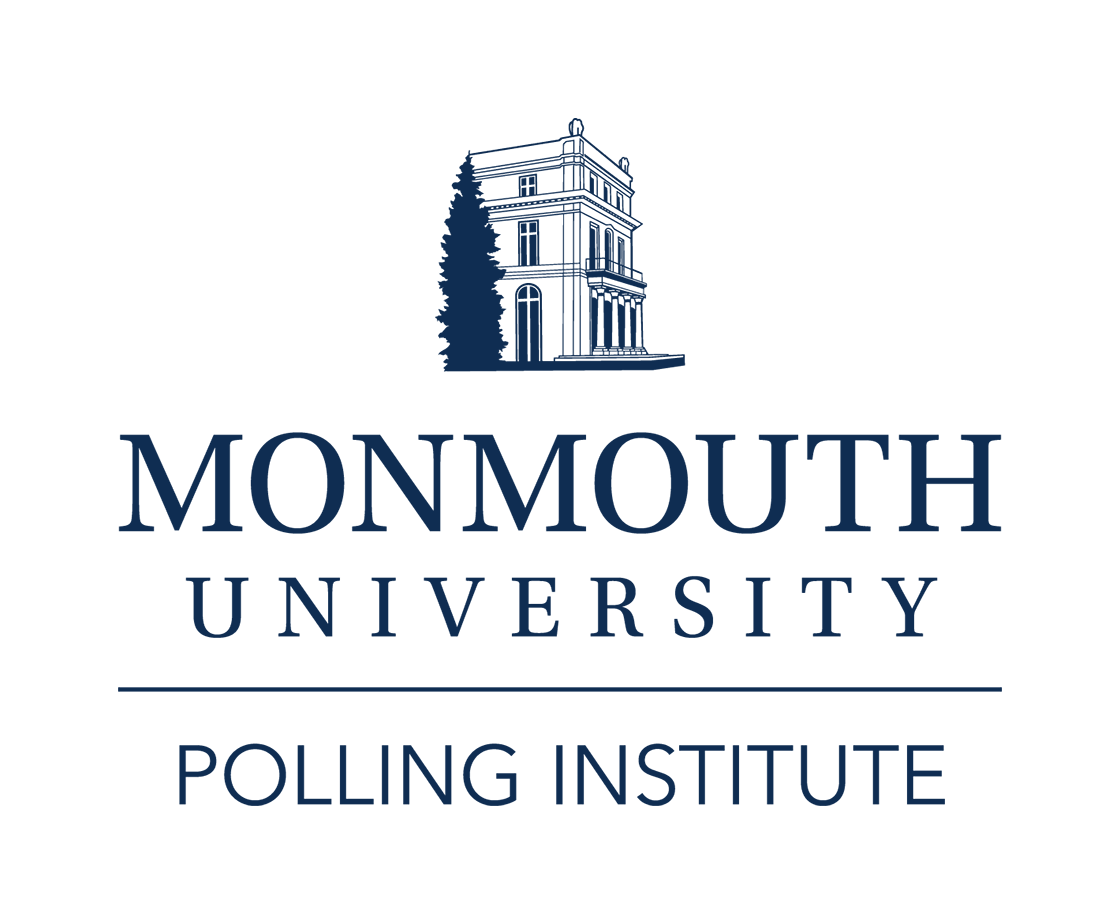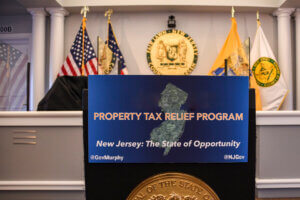New Jersey is riveted to news about Ebola. The Monmouth University Poll found that Gov. Chris Christie gets better marks than the federal government for handling the situation, with the vast majority of voters agreeing with the state’s move to quarantine a nurse from Maine. Most say that the actual threat Ebola poses to the Garden State is no more than a minor one, but a 1-in-4 minority fear that it may present a serious risk.
Practically every New Jersey voter has been following news about Ebola, including 88% who have heard a lot about the issue. About 1-in-4 (26%) believe that Ebola poses a major public health threat to New Jersey, while a 7-in-10 majority say it poses only a minor threat (48%) or no threat at all (21%). There are no notable demographic differences in who thinks Ebola is more or less of a public health risk.
“It’s encouraging that people in New Jersey are able to come to their own conclusions based on the most credible sources, the medical community, versus individuals who are exaggerating the risk for their own political reasons,” said Dr. George Kapalka, chair and professor of psychological counseling at Monmouth University. “I am also a practicing psychologist as well as a professor, and my patients don’t seem to be exhibiting a high degree of anxiety about this.”
Just 37% of New Jersey voters approve of the way the federal government has handled the Ebola issue while 46% disapprove. They are more positive about Gov. Christie’s response, with 53% who approve and just 27% who disapprove of the way he has handled the issue. There are some stark partisan differences. Most Democrats (56%) approve while most Republicans (69%) disapprove of the federal government’s response to Ebola. On the other hand, the vast majority of Republicans (77%) approve of how Christie has handled the response while Democrats are divided on the governor’s actions – 42% disapprove and 30% approve. Half (50%) of independents disapprove of Washington’s performance on Ebola but 59% of these same voters approve of Christie’s response.
“Gov. Christie has made a good read of how uneasy the public is with the seemingly uncertain response from the feds. The Ebola issue has offered him an opportunity to take on the mantle of leadership,” said Patrick Murray, director of the Monmouth University Polling Institute.
One controversial move made by New Jersey’s governor was instituting a mandatory quarantine on travelers from West Africa who exhibit potential symptoms of Ebola. This policy was tested almost immediately last week when a nurse was detained at Newark Liberty Airport and isolated at a nearby hospital despite her claims that she was not showing any symptoms. The vast majority of New Jersey voters support this action.
Fully 67% approve of the decision to quarantine this nurse and only 19% disapprove. Republicans (84%) and independents (71%) are more likely than Democrats (49%) to agree with this move. Garden State voters are more divided on the action taken a few days later to allow the nurse to return to her home state of Maine – 38% support this subsequent move and 40% disapprove. Republicans are more likely to disapprove (56%) than approve (25%) of allowing the nurse to return home whereas more Democrats approve (45%) than disapprove (29%). Independents are split between those who approve (42%) of releasing the nurse from her New Jersey quarantine and those who disapprove (39%).
The Monmouth University Poll was conducted by telephone from October 30 to November 2, 2014 with 802 likely voters in New Jersey. This sample has a margin of error of ± 3.5 percent. The poll was conducted by the Monmouth University Polling Institute.
DATA TABLES
The questions referred to in this release are as follows:
(* Some columns may not add to 100% due to rounding.)
1. On another topic, how much have you read or heard about the Ebola virus in the news – a lot, a little, or nothing at all?
|
LIKELY |
PARTY ID | GENDER |
AGE | |||||||
|
Dem | Ind | Rep | Male | Female | 18-34 | 35-49 | 50-64 |
65+ | ||
| A lot | 88% | 87% | 90% | 88% | 86% | 89% | 83% | 81% | 91% | 89% |
| A little | 11% | 12% | 10% | 12% | 13% | 10% | 17% | 17% | 8% | 10% |
| Nothing at all | 1% | 1% | 0% | 0% | 2% | 0% | 0% | 2% | 1% | 1% |
2. Do you approve or disapprove of the way the federal government has handled the Ebola issue, or haven’t you heard enough about what it has done?
|
LIKELY |
PARTY ID | GENDER |
AGE | |||||||
|
Dem | Ind | Rep | Male | Female | 18-34 | 35-49 | 50-64 |
65+ | ||
| Approve | 37% | 56% | 34% | 17% | 37% | 37% | 49% | 34% | 41% | 33% |
| Disapprove | 46% | 24% | 50% | 69% | 49% | 43% | 30% | 51% | 47% | 45% |
| Not heard enough | 13% | 14% | 11% | 11% | 10% | 15% | 13% | 12% | 10% | 15% |
| (VOL) Don’t know | 4% | 4% | 4% | 2% | 2% | 5% | 8% | 2% | 2% | 6% |
| Not aware | 1% | 1% | 0% | 0% | 2% | 0% | 0% | 2% | 1% | 1% |
3. Do you approve or disapprove of the way Gov. Chris Christie has handled the Ebola issue, or haven’t you heard enough about what he has done?
|
LIKELY |
PARTY ID | GENDER |
AGE | |||||||
|
Dem | Ind | Rep | Male | Female | 18-34 | 35-49 | 50-64 |
65+ | ||
| Approve | 53% | 30% | 59% | 77% | 54% | 52% | 36% | 54% | 55% | 54% |
| Disapprove | 27% | 42% | 28% | 7% | 27% | 27% | 36% | 24% | 30% | 23% |
| Not heard enough | 17% | 24% | 12% | 14% | 16% | 19% | 23% | 19% | 13% | 20% |
| (VOL) Don’t know | 2% | 2% | 1% | 1% | 1% | 2% | 6% | 1% | 1% | 2% |
| Not aware | 1% | 1% | 0% | 0% | 2% | 0% | 0% | 2% | 1% | 1% |
4. Taking into account what you have heard about how Ebola is spread, how much of a public health threat is Ebola to New Jersey? Is it a major threat, a minor threat, or not really a public health threat to New Jersey?
|
LIKELY |
PARTY ID | GENDER |
AGE | |||||||
|
Dem | Ind | Rep | Male | Female | 18-34 | 35-49 | 50-64 |
65+ | ||
| Major threat | 26% | 21% | 29% | 31% | 26% | 27% | 22% | 32% | 25% | 26% |
| Minor threat | 48% | 46% | 46% | 52% | 45% | 50% | 47% | 51% | 50% | 44% |
| Not really a threat | 21% | 27% | 22% | 12% | 25% | 18% | 27% | 16% | 23% | 23% |
| (VOL) Don’t know | 4% | 4% | 2% | 4% | 3% | 4% | 3% | 0% | 2% | 7% |
| Not aware | 1% | 1% | 0% | 0% | 2% | 0% | 0% | 2% | 1% | 1% |
5. Did you hear about the nurse returning from West Africa who was stopped at Newark Airport and quarantined at a New Jersey hospital, or didn’t you hear about this?
|
LIKELY |
PARTY ID | GENDER |
AGE | |||||||
|
Dem | Ind | Rep | Male | Female | 18-34 | 35-49 | 50-64 |
65+ | ||
| Yes, heard | 95% | 94% | 97% | 96% | 95% | 96% | 86% | 95% | 96% | 97% |
| No, not heard | 5% | 6% | 3% | 4% | 5% | 4% | 14% | 5% | 4% | 3% |
6. Do you approve or disapprove of the decision to quarantine this nurse, or do you have no opinion?
|
LIKELY |
PARTY ID | GENDER |
AGE | |||||||
|
Dem | Ind | Rep | Male | Female | 18-34 | 35-49 | 50-64 |
65+ | ||
| Approve | 67% | 49% | 71% | 84% | 66% | 67% | 48% | 70% | 68% | 67% |
| Disapprove | 19% | 30% | 17% | 7% | 19% | 19% | 15% | 17% | 21% | 19% |
| No opinion | 9% | 14% | 7% | 4% | 9% | 9% | 23% | 7% | 7% | 9% |
| (VOL) Don’t know | 1% | 1% | 1% | 0% | 1% | 1% | 0% | 1% | 0% | 2% |
| Not aware | 5% | 6% | 3% | 4% | 5% | 4% | 14% | 5% | 4% | 3% |
7. Do you approve or disapprove of the decision to allow this nurse to return home to Maine before the 21 day quarantine was up, or do you have no opinion?
|
LIKELY |
PARTY ID | GENDER |
AGE | |||||||
|
Dem | Ind | Rep | Male | Female | 18-34 | 35-49 | 50-64 |
65+ | ||
| Approve | 38% | 45% | 42% | 25% | 37% | 39% | 28% | 35% | 45% | 37% |
| Disapprove | 40% | 29% | 39% | 56% | 39% | 41% | 35% | 44% | 39% | 39% |
| No opinion | 16% | 19% | 15% | 14% | 18% | 15% | 23% | 16% | 11% | 20% |
| (VOL) Don’t know | 1% | 1% | 1% | 2% | 1% | 1% | 0% | 0% | 1% | 2% |
| Not aware | 5% | 6% | 3% | 4% | 5% | 4% | 14% | 5% | 4% | 3% |
The Monmouth University Poll was sponsored and conducted by the Monmouth University Polling Institute from October 30 to November 2, 2014 with a statewide random sample of 802 likely voters drawn from a list of registered voters who voted in at least two of the last four general elections and indicated they were likely to vote in the 2014 election. This includes 680 contacted by a live interviewer on a landline telephone and 122 contacted by a live interviewer on a cell phone. Monmouth is responsible for all aspects of the survey design, data weighting and analysis. Final sample is weighted for region, age, gender, and party registration based on state registration list information on the pool of voters who have participated in two of the last four elections. Data collection support provided by Braun Research (field) and L2 (voter list). For results based on the total sample, one can say with 95% confidence that the error attributable to sampling has a maximum margin of plus or minus 3.5 percentage points. Sampling error can be larger for sub-groups (see table below). In addition to sampling error, one should bear in mind that question wording and practical difficulties in conducting surveys can introduce error or bias into the findings of opinion polls.
|
POLL DEMOGRAPHICS (weighted) | ||||
|
Registration |
Self-Report |
8% 18-34 |
76% White | |
| 43% Dem | 36% Dem | 48% Male | 22% 35-49 |
13% Black |
| 34% Rep | 37% Ind | 52% Female | 35% 50-64 |
8% Hispanic |
| 23% Unaffiliated | 27% Rep | 35% 65+ |
3% Asian/Other | |
Click on pdf file link below for full methodology and results by key demographic groups.




